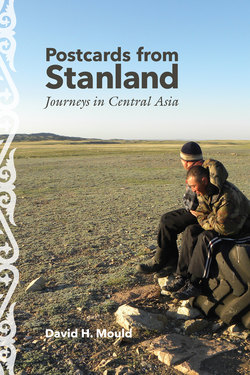Postcards from Stanland

Реклама. ООО «ЛитРес», ИНН: 7719571260.
Оглавление
David H. Mould. Postcards from Stanland
Отрывок из книги
Postcards from Stanland
Journeys in Central Asia
.....
Maybe it’s because we’re not as globally minded as we suppose. American ignorance—or perhaps ignore-ance better describes it—of the geography of Central Asia was famously lampooned on the cover of the December 10, 2001, edition of the New Yorker magazine, three months after September 11 (see page 10). The “New Yorkistan” cover satirically depicted the five boroughs and individual neighborhoods, mixing local and Yiddish names with suffixes common in Central Asia and the Middle East. Starting from their original idea, Bronxistan, the creators Maira Kalman and Rick Meyerowitz took readers on a stroll in Manhattan’s Central Parkistan, hailed a cab at Taxistan (LaGuardia Airport), speculated in real estate at (Donald) Trumpistan, celebrated cultural diversity in Lubavistan (named for a branch of the Hasidic Jews) and Gaymenistan, and then ventured to the outer suburbs of Coldturkeystan and Extra Stan (traveling through Hiphopabad, passing by the Flatbushtuns and the district of Khandibar).6
Why are the “stans” important? In a 1904 paper, “The Geographical Pivot of History,” delivered at Britain’s Royal Geographical Society, the Oxford geographer Sir Halford Mackinder, now recognized as one of the doyens of geopolitics, argued that interior Asia and Eastern Europe, the so-called Eurasian heartland, was the strategic center of the “World Island.” For more than a century, imperial Britannia had ruled the waves, but Mackinder, despite his imperialist views, warned of the decline of sea power in the twentieth century. As the heartland rose, Britain would become part of the subordinate “maritime lands.” Since the first millennium BCE, the landlocked steppes of Eurasia have provided the staging ground for horse-borne invasions. Shielded by the Arctic Ocean to the north and mountain ranges to the south, armies from the heartland could strike east to China, west to Europe, and southwest to the Middle East.7
.....